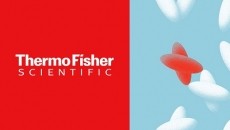Maxi use for micro mixer
tighter heat and reaction control compared to conventional systems
was showcased at the ACHEMASIA meeting last week.
The Institut fur Mikrotechnik Mainz in Germany first introduced the StarLam 3000 in February of this year, and ACHEMASIA was its first major showing to IMM's Asia-Pacific customer base.
Before this was launched, microstructured mixers were available only at the laboratory scale, but the StarLam takes the technology up to small production scale. And IMM plans to develop a commercial-scale production mixer within the next three to five years, said a spokesman for the company.
Microstructured mixers are only just starting to emerge onto the marketplace, and as their name suggests are based on a large number of tiny mixing blades or foils, rather than fewer, larger blades in conventional mixers. They are finding use at the bench-scale for applications such as process development studies, and studies have suggested that reaction yields can be improved by as much as 25 per cent, through more effective mixing and better control of reaction temperatures.
The StarLam 3000's primary use is the continuous fabrication of chemical and pharmaceutical products, and it is primarily suitable for mixing miscible liquids, according to IMM, although it may in selected cases be applied as well for dispersing non-miscible liquids as well as dispersing liquids with gas. This is made possible by the accumulation of 2 x 113 thin mixing foils (250 µm each). Their arrangement generates a finely distributed fluid system which is then mixed by turbulence.
The mixer achieves a mixing capacity of 3000 l/h at a low energy input and a low pressure loss of 0.7 bar, which makes it particularly suitable for pilot scale production of fine chemicals. The pharmaceutical industry tends to use smaller-scale systems with no need for this throughput, although this level is needed for the production of creams, said the spokesman.
"Microstructured mixers are the key to the improved synthesis of fine chemicals as well as to the production of dispersions, creams, foams and emulsions," said IMM.
Until now, microstructured mixers were only applicable in laboratory and pilot scale productions. Typical maximum flow rates were 2 - 100 l/h for water-like fluid systems. "The development of microstructured mixing foils makes it now possible to achieve throughput rates of several cubic metres per hour which is production-scale," it added.















